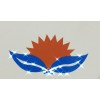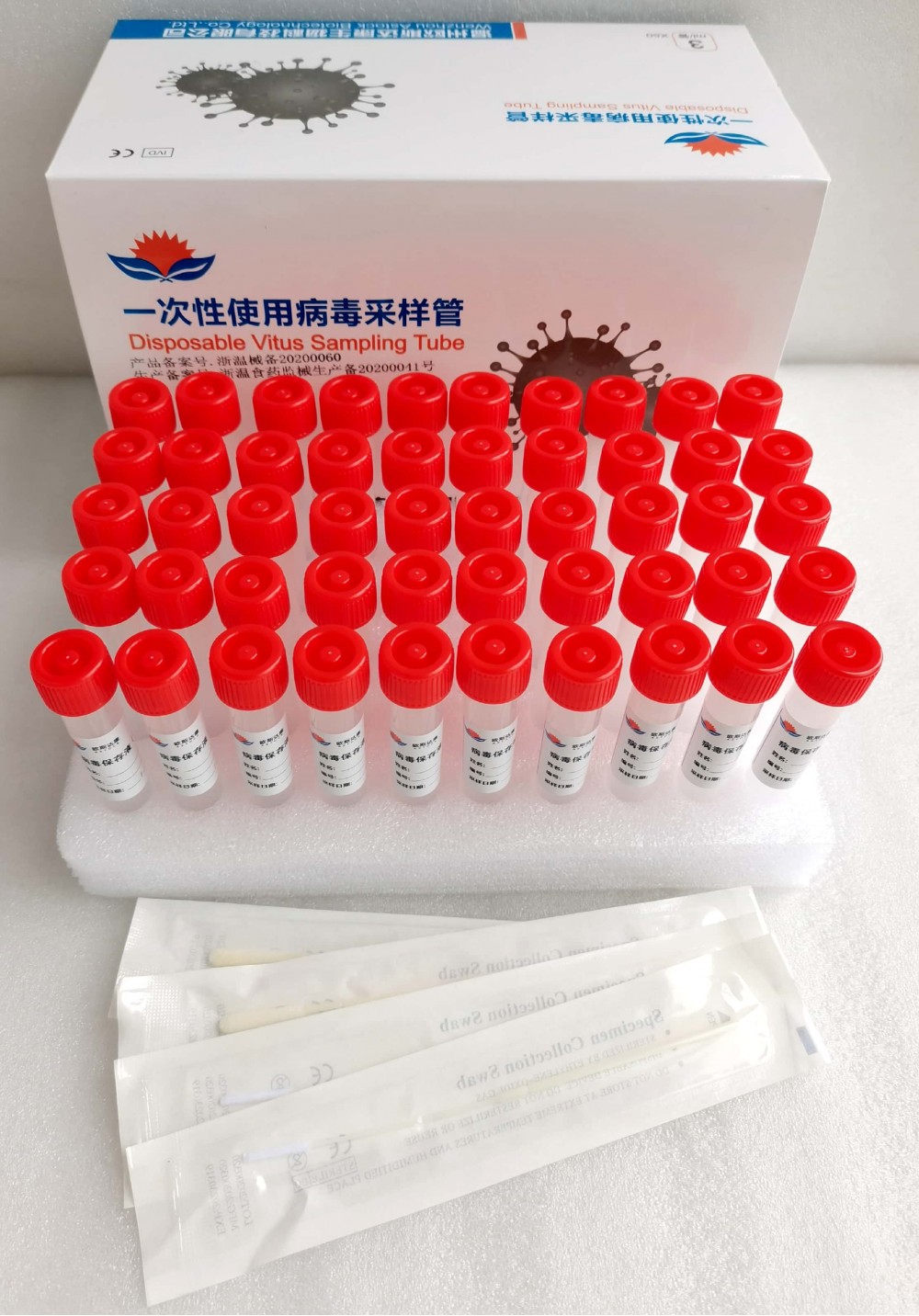Disposable virus sampling tube
- FOB Price:Get Latest Price >
- Min.Order:1000 Set(s)
- Production Capacity:100,000 pcs/day
- Payment Terms:T/T , D/P
- Favorite
Business Type:Manufacturer
Country/Region:China
Ddu Verified
HOT Rank


Wenzhou Astock Biotechnogy Co.,Ltd
We are professional supplier of Disposable virus sampling,Covid-19 igg/igm rapid test cassette,Nucleic acid detection kit,Colloidal gold test paper,Fluorescence quantitative PCR,Enzyme-labeled ELISA k
Business Type:Manufacturer
Country/Region:China
Ddu Verified
HOT Rank

Single use virus sampling tube inactivation type manual
【product name】
Generic name: single-use virus sampling tube
English name: Disposablevirusssmplingtube
[Packaging specifications] 50 servings/box & 800 servings/box
【expected usage】
It is used for the collection and transportation of clinical influenza, avian influenza, hand, foot and mouth disease, measles and other virus specimens, as well as chlamydia, mycoplasma, and ureaplasma specimens.
【Main components】
Serial number Composition 50 servings/box 800 servings/box
1 Preservation tube (including 3ml inactivated or non-inactivated preservation solution) 3ml×50 tubes 3m1×800 tubes
2 Throat swabs or nasal swabs 50 pieces/box 800 pieces/box
3 Instructions 1 copy 1 copy
[Storage conditions and validity period] Normal temperature is 5~25℃, and the validity period is 12 months.
【Sample requirements】
1. Applicable sample types: clinical samples such as nasopharyngeal swabs, saliva, sputum, etc.;
2. Sample storage and transportation: samples should be transported to the corresponding laboratory for testing within 48 hours after collection, and the storage temperature is 2~8℃: if they cannot be transported to the laboratory within 48 hours, they should be stored at -20℃ or below , Sent to the corresponding laboratory within one week. Samples should avoid repeated freezing and thawing.
【Instructions】
1. Mark relevant sample information on the sampling tube.
2. According to different sampling requirements, use the sampling swab to sample at the corresponding site, hold the handle and gently insert the sampling swab into the sampling site, gently rotate the sampling swab 3-5 times, and then take it out slowly.
3. Put the extracted sample into the sampling tube, break the swab at the breaking point of the swab at the edge of the tube, leave the brush head in the tube, and then tighten the tube cap and seal it to complete the sampling.
4. Freshly collected clinical specimens should be transported to the laboratory within 48 hours under chemistry. If they cannot be delivered to the laboratory within 48 hours, they should be stored at -20°C or below. The specimens should be separated as soon as possible after being sent to the laboratory. Those that can be inoculated and separated within hours can be stored at 4C. If not inoculated, it should be stored at -20℃ or below.
5. Conventional sampling methods are as follows:
a) Nasal swab: Gently insert the swab head into the nasal palate in the nasal passage, stay for a while and then slowly turn the line to exit. Swab the other nostril with another swab, immerse the swab head in the sampling solution, and discard the tail.
b) Pharyngeal swab: Use the swab to wipe the bilateral pharyngeal tonsils and posterior wall of the pharynx. Similarly, immerse the swab head in the sampling solution and discard the tail.
c) Mouthwash: Use 10mL of normal saline to gargle. When rinsing, make the patient's head tilt back slightly, make an "oh" sound, let the normal saline rotate in the pharynx, and collect the lotion with a 50mL empty sample tube.
d) Nasal lotion: The patient takes the sitting woman, tilts his head slightly back, and uses a pipette to inject 50 mL of normal saline into one nostril, and asks the patient to make a K sound at the same time to close the pharyngeal cavity. Then let the patient lower his head to let the saline flow out, collect the lotion with a 50mL empty sampling tube, and repeat the process to wash both nostrils.
e) Nasopharyngeal aspiration: tracheal and bronchial secretions are often collected by this method, and mucus is extracted from the nasopharyngeal area with a collector connected to a negative pressure pump. First insert the collector head into the nasal cavity, turn on the negative pressure, rotate the collector head and slowly push it out. Collect and extract the mucus and rinse the collector three times with 5 mL of the collection fluid.
f) Autopsy tissue specimens: If necessary, collect autopsy tissue specimens for sample component separation. The specimen is autopsy tissue.
g) Sampling of mycoplasma, chlamydia, and ureaplasma specimens: male: insert a sterile cotton swab into the urethra about 2cm, rotate it, and stand still for several seconds to collect the material. Female: Wipe off the cervical mucus, insert a sterile swab into the cervical canal 1-2cm to get the material. To
【Precautions】
1. The disposable sampler should be transported at a low temperature of 2-8℃ and sent for inspection immediately after sampling. The collected samples can be placed at 2-8°C for a short period of 48 hours; long-term storage should be placed under low temperature conditions below -20°C to avoid repeated freezing and thawing.
2. The product is strictly prohibited to be used for the sampling of bacterial samples, and the antibiotic contained in the preservation solution itself has an inhibitory effect on bacteria.
3. It is forbidden to directly contact the collected patient, and to sample the patient after wetting the swab.
4. Strictly follow the sampling procedures when collecting samples to ensure that the sampling location is accurate and the sampling intensity is uniform and suitable, otherwise the sample quality will be affected.
5. The product must not be used after the expiry date or the product packaging is damaged. To
【Validity】12 months
[Explanation of the logo]
【references】
【Manufacturer】Wenzhou Astock Biotechnology Co., Ltd.
[Product registration certificate number] Zhejiang Wenxie No. 20200060
[Production record certificate number] Zhejiang Wen Food and Drug Administration Apparatus No. 20200041
Registered address: No. 38 Dongfang Road, Wenzhou City, Zhejiang Province (Room 1208, Building 1, University Science Park Incubator)
Production address: No. 38 Dongfang Road, Wenzhou City, Zhejiang Province (Room 1208, Building 1, University Science Park Incubator)
